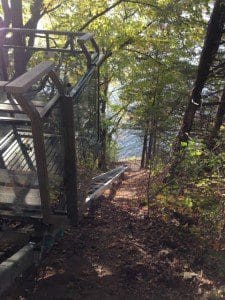At Hill Hiker® we produce hillside lift systems, also known as funiculars or trams. The equipment helps many of our clients gain access to places that would be difficult to reach or inaccessible. Though they provide an essential purpose, chances are you haven’t heard much about funiculars in the news. It’s even less likely you’ve heard any of these facts about funiculars or tram systems.

The Funicular Ruins of Southern California
Not too long ago, in the 20th century, funiculars were mainstream modes of transportation in Southern California. Before roads paved the way up steep grades, citizens and visitors needed safe and reliable access up some of the area’s hills and mountains.
An area where California’s citizens took some R&R was the mountains north of Pasadena. There, the Mount Lowe Scenic Railway climbed the mountains from 1893 to 1938. The funicular has since been shut down, but the ruins can still be found there if you look.
Not far from those ruins, citizens can find the remnants of another funicular, Mt. Washington’s Incline Railway Station. The station charged a nickel for riders to ascend the Mount Washington slope from 1909 to 1919. All that remains now is the old station, which has since become a residence.
A historic funicular was up and running until very recently in the heart of Los Angeles. It was closed down due to safety concerns in 2013. The old funicular, Angels flight, had a pretty good run, operating off and on since 1901.
Though the funiculars mentioned above are no longer operational, funiculars can still be found on the hillsides of Los Angeles. Hill Hiker® installed one of our hillside lift systems in the city not too long ago. Check it out on our gallery page.
Hiroshima’s Invincible Trams
On August 6th 1945, a nuclear bomb was dropped on Hiroshima. Most of the city’s structures were decimated and thousands of people lost their lives. One of the few things that survived was the city’s tram cars. In fact, the city’s tram system was up and running three days after to help with the relief effort. One of the cars is still operating today. It currently transports tourists over the hills of the city. If it is hard to believe how a little tram survived to become a symbol of redemption for the city, you can find out more in this BBC clip.
Funiculars Before Power
In the 19th century, water was used to move funiculars up and down the hill. The method was employed for a two car system, where the car at the top was filled with a container of water, while the car on the bottom was filled with less water. The weight of the cars counterbalanced the other and moved them up and down the incline.
Funiculars and tram systems are filled with a rich history. Stay tuned for some more interesting facts. Currently we’re combing the world for information. If you have any suggestions for interesting snippets, drop us a line on our Facebook or Twitter. Or, you can check out the pages to learn some of the interesting things we’ve shared.









